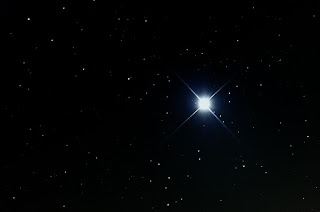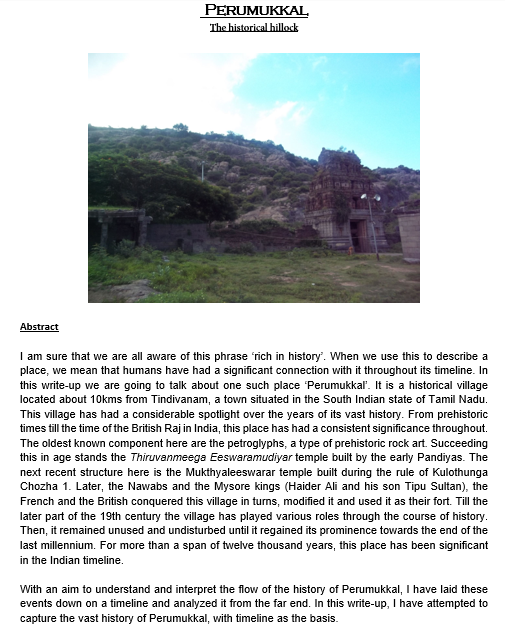???!!!
I am sure that all of us, at least once in
our lifetime, have looked up at the night sky and wondered what, truly, are the
stars? It is a basic human tendency to wonder and the night sky always triggers
that instinct. One interesting thing here is that the way we look at the night
sky and perceive it has changed over the ages. During the early ages, we
thought the sky to be a blanket covering the earth and the stars are
patterns on it. As thoughts advanced with time, the stars became part of
several cultural and religious practices. The movement of stars helped us
find time and directions. These movements were well monitored and became
milestones in their endless journey. After a point, we were able to predict the
milestones ahead. Now, with the use of modern equipment and science, we have
understood that stars are situated in different spaces in the universe. Most of
us are aware that even though two stars appear close to each other in the sky,
they are actually far apart. While most of us seem to be familiar with this,
the next idea is not as prevalent. Whenever you look at the night sky, you not
only see different points in space but also different points in time.
In this write-up I aim to set you thinking on
how our five senses fail to perceive the present, with the night sky as an
example. Towards the end, I am planning to contradict the preceding paragraph
and remind you of a perspective of looking at the universe that is not as
famous as Science.
???!!!
Light is the fastest known object. Approximately, in a second, light can travel seven times around the Earth. Speed of light is also used in astronomy to represent distances and the unit is termed as light years. For instance, the distance between earth and the sun is approximately eight light minutes and the distance between our planet and the star Sirius ( the second brightest star in the sky ) is about 8.6 light years. According to this, light takes 8.6 years from Sirius to reach earth. This means what we see as Sirius today is actually an image from eight years in the past.
Let’s look at another example. This time a star named Rigel A ( one of the three stars we see as Rigel). This star is one of the four major stars of the constellation Orion and is relatively close to Sirius in the night sky. This star is approximately 864 light years away from earth so what we see as Rigel is actually the footage playing from 864 years in the past. Though together in the night sky, the two points, Sirius and Rigel, are in different spaces and in different times. Now, let's broaden our vision. All the stars we see are from different spaces and different times.
At this point, I would like to ask the readers a
question. Are we capable of looking at what is happening in the stars
right now? Do we possess that technology? At least, can we reduce the time
difference? If you know the answer to this, please write back to me.
 |
| The time light takes to reach us from the following objects |
With this understanding, let us come back to our daily life. Everything we see is the deflection of humanly perceivable light rays. Light from the source, gets deflected by the object. According to our position, certain light rays reach our eyes ( light travels in a straight line ). From these rays, we can see the images produced by those whose frequencies lie between that of the humanly perceivable range. As we already know, light takes some time to travel from one place to another. Even though the time taken is very less, there is still a difference. With this we can conclude that, that we can only see the past, i.e. whatever we see now is an image of an object which has taken the time to travel the distance between our eyes and the object. Then, whatever we see is the past and we are not capable of seeing the present. The closer we get to an object, the closer we get to its present. The farther we move, the backwards we move in its time.
This applies for our other senses as well. We
are not capable of perceiving the present. This tempts me to ask a very
fundamental question, what is the present? It seems to be changing from person
to person, position to position and so on. This sets me thinking: does time
change based on perspective?
For me to establish the subject and ask my questions, it took me about a page. Now I am going to introduce you to a legend who has done it in just two lines. His name is Subramanya Bharathiyar. He is a renowned Tamizh poet. The two lines I am talking about are from his song Nirpathuve Nadapathuve.
காலமென்றே ஒரு நினைவும்
காட்சியென்றே பல நினைவும்
The two lines can literally be translated as:
Time, a single memory and Space, a multiple memory. The selection of words is
the key. He does not address time and space as objects or concepts but as
memories. When we take the night sky example here, the various points we see (
stars ) are actually memories from different times. That can also be a meaning of these lines. Viewing from a single memory ( time ), we see multiple
memories ( space ).
This is the perspective that I feel is not as prevalent as the others. I feel science does not accept this due to lack of proof. Neither can it deny it due to the same reason. I urge people to look at these perspectives as well and broaden the boundaries within which we function.
Adding more to this, the Bharathiyar song opened up to me a new dimension. Every time I learn something new, the first thing I wonder is what have the Tamizh people (it being my mother tongue ) said about this? Naturally, I wondered the same for this topic as well so I take this opportunity to announce the title of one of my future blogs:
Picture credits:
https://en.wikiversity.org/wiki/Stars/Sirius
Proof read by:
Manya Sekar
Thank you!


INTRIGUING.
ReplyDelete"Then, whatever we see is the past.." is a powerfull phrase in ur blog.
Bringing in Mahakavi Bharatiyar's philosophical observation in Time and Space science is so cool and needs special appreciation.
All the best Neeraj. Waiting for the NEXT.
Thank you so much! I wish for more audience like this. Thank you again!
DeleteNice. Can you know how the வால்நட்சத்திரம் formed and how to know the exact date and time??
ReplyDeleteThanks!
DeleteI am aware of how and why the வால்நட்சத்திரம் is formed but I am not yet aware of the way we predict it.
Excellnt and cool writeup. Very nice.
ReplyDeleteAccording to Albert Einstein space is a blanket on this he give the theory about black hole. watch this to know more
ReplyDeletehttps://youtu.be/MTY1Kje0yLg
and this remembers me one tamil vidukadai
அப்பா பணத்தை என்ன முடியாது
அம்மா சேலைய மடிக்க முடியாது answer : star and space
very nice perspective of think waiting for more
Yes! I am aware of the blanket theory! It is just mind blowing!
DeleteThank you so much!
Very stimulating topic and content Neeraj - sets one thinking while also learning a valuable thing or two. Way to go.
ReplyDeleteWhat is the present is an interesting query - just the other day, got to watch this video https://youtu.be/yHtbRd_H9EI - an today, to see contemplation on time and space in this perspective- it is amazing to see such a process of enquiry in someone so young :-)
Thank you so much! The video is just another way of putting the question. What he says in the end is cool: - Everything is relative!
DeleteThanks again!
Thought provoking write up ! What we see is from the past! Keep thinking, keep probing and one day you can find the answer to be present !
ReplyDeletehaha! thank you!
DeleteVery interestingly posed thoughts. Lovely pickup from Bharathiyar as well - nicely connected. I think what you've posed here is answered by what is known as Heisenberg's uncertainty principle. The person seeing's position matters.
ReplyDeleteThank you! Oh! That is interesting! I shall check it out!
Deleteஅருமையான பதிவு. அடுத்த பதிவின் தலைப்பே ஆர்வத்தை தூண்டுகிறது 👍
ReplyDeleteThank you!
Delete